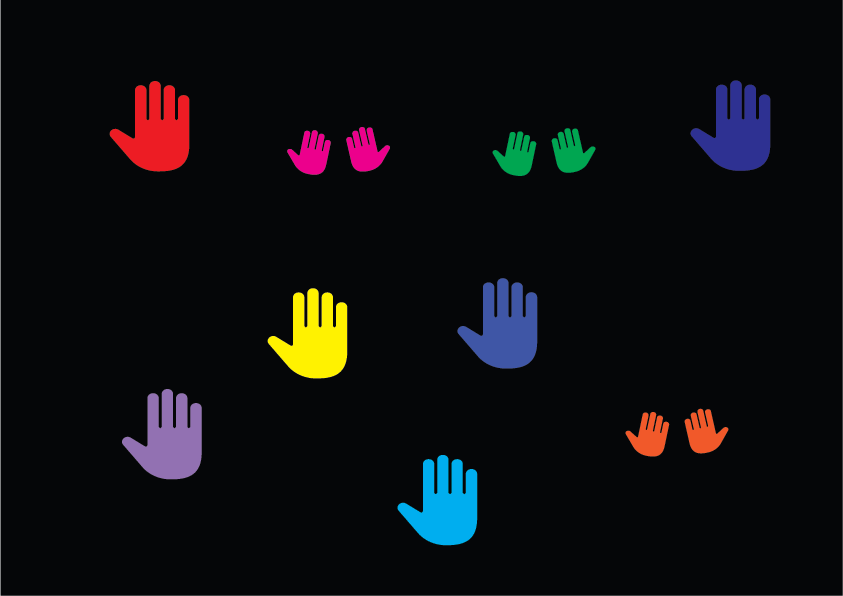Y4. Lesson 8. Major and minor seconds
Prior learning: None
Duration: 30 minutes
Materials: Woodblocks or claves
Keywords: Beat, rhythm, singing, chanting, partners, rhymes, circle games.
Difficulty: ![]()
Prepare
Present
Major and minor seconds
Practise
 Melodic development
Melodic development
![]() Students discover that whole steps and half-steps have a special name.
Students discover that whole steps and half-steps have a special name.
- If you have a piano or other keyboard in your teaching environment, demonstrating the F major pentachord is helpful. The half step between A and Bb is clearly seen.
- Students will know that the note between mi and so is called fa.
- Sing or play the five notes starting from F and ask students to identify the steps between the notes as steps or skips.
- Show that steps can be half steps or whole steps.
- Fa is a half-step from mi and a whole step from so.
- Musicians use the word major second for a whole step and a minor second for a half-step.
- Do, re, mi, fa, and so are given numbers, with do as 1, re as 2, etc.
- The pattern of notes in a major pentachord can be described as two major seconds followed by a minor second and another major second.
- Teach that the word penta is a Latin word meaning five.
 Rhythmic development
Rhythmic development
![]() Students clap the rhythm to discover the song's name.
Students clap the rhythm to discover the song's name.
- Project the graphic or print (as many copies as needed).
- For song 1, clap the rhythm and ask the class to read, clap and identify the song [Ickle Ockle].
- Repeat for song 2 [Diddle Diddle Dumpling - first half].
- Repeat for song 3 [Cotton Eye Joe]
- Repeat for song 4 [Chatter With The Angels]
- For an extension, play the first clap track on the player and, when finished, ask students to use their inner hearing to identify the song.
- Repeat with the other songs.
 Game
Game
![]() Students improvise movements and words in this Afro-American song.
Students improvise movements and words in this Afro-American song.
- Students form a large circle.
- Lead the class in singing the first verse of the song.
- Ask students to wave their arms at the word 'Hey' as they walk around in a circle.
- For the second verse, replace 'Hey' with 'Hop' and students should hop (lots of fun!)
- Students should offer up new body movement words for subsequent verses, such as jump, stomp, etc.
 Listening
Listening
![]() Students listen to the intervals between notes to determine whether they are major or minor seconds.
Students listen to the intervals between notes to determine whether they are major or minor seconds.
- Play the first track and ask students if the five notes are a pentachord.
- When correct answers are received, play the second track and repeat the question.
- When finished, ask students what the pattern is for a major pentachord. [Whole step - whole step - half step - whole step]
- Ask students the solfa names of the major pentachord and to sing them starting on do.
 Visual learning
Visual learning
![]() Students refresh their knowledge of whole and half steps in a major pentachord.
Students refresh their knowledge of whole and half steps in a major pentachord.
- As the concept of whole and half steps requires several teaching periods, the video is helpful in a visual demonstration in those classrooms without a piano.
- The concept of whole and half steps is easy to follow, and the video also shows the formal names of major and minor seconds.
 Instruments
Instruments
![]() Students
Students
 Part work
Part work
![]() Students form a circle and improvise on a beat.
Students form a circle and improvise on a beat.

- Students are in a circle.
- Explain that one student volunteer will improvise a four-beat pattern by clapping.
- The next student will begin a four-beat improvisation based on the last two beats of the first student.
- The next student will then continue the improvisation in the same fashion.
- Keep going until everyone has had a turn or until time permits.
 Assess
Assess
Suggested lessons
Y1. Beat II

Y1. Beat III

Y1. Beat IV

